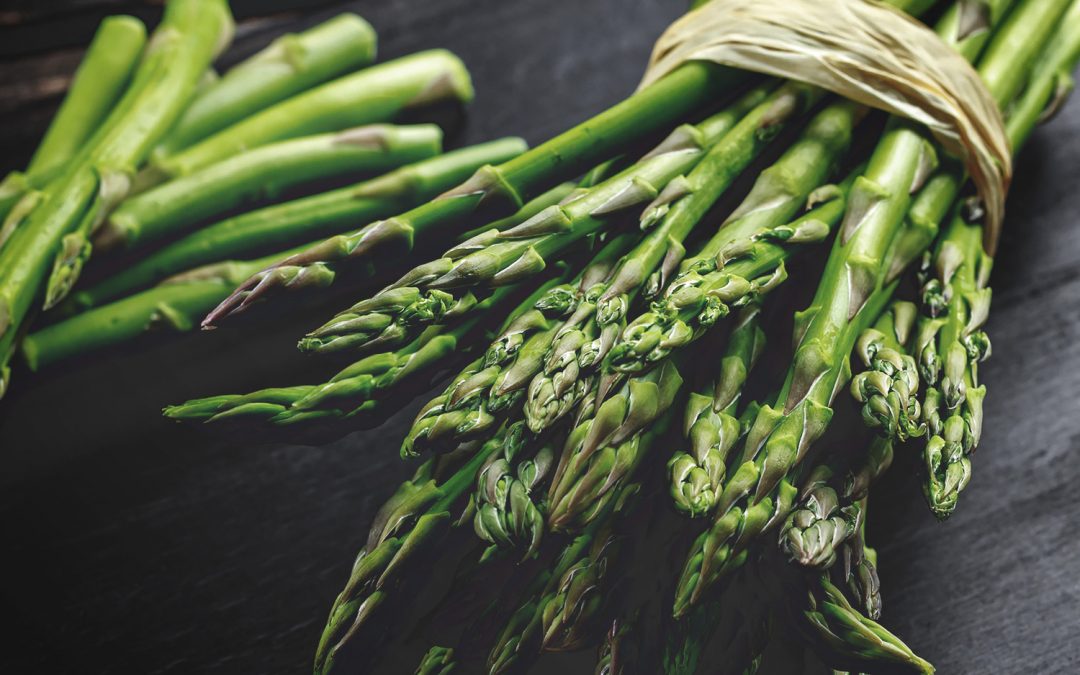Asparagus are one of the best known and most widely enjoyed vegetables during the spring period. They flower for a limited time, from March to May, and then reappear the following year. Perhaps because of this short but intense period of life, it is a much desired and appreciated vegetable.
Asparagus is cultivated from Asia to the Mediterranean and is considered to have been a food already known to Egyptian, Greek, and Roman cultures. The latter associated asparagus with the goddess Venus for its aphrodisiac properties.
Today, the largest producers in Europe are Germany, Spain, Italy, and France. In particular, production in Italy covers an area of 9,500 hectares and the most productive regions are Puglia, Veneto and Emilia Romagna.
There are various types of asparagus but the best known in our peninsula are the green ones (which are also the most common), the white ones, from Bassano and Cimadolmo, and those with a purple shade from the Albenga area.
Lastly, there are also wild species that grow near rivers, in woods and on sandy soils and feature very thin stalks.
As one might think, the colour of the vegetable is not determined by its variety, but by the time its shoots are exposed to the sun. When asparagus is grown underground, hence without light, and collected immediately, its sprouts do not have time to colour and so they stay a pale/white colour, while the green ones are only collected when they reach a length of about 15 cm from the ground, thus giving the sprouts, exposed to the sun, time to colour.
The different types vary not only in their colour, but also in their shape, which can be thinner or rounder, and above all in their flavour, ranging from sweet to intense to more bitter.
Read this article also in Italian and German.
A vegetable with countless benefits
Besides their special taste, asparagus is a delicious and desirable vegetable not only for the countless properties it brings to the body. In fact, this vegetable is one of those that provide valuable benefits.
One of the best known is that they are an excellent diuretic, thanks to the presence of asparagine; they are laxative, since they are rich in fibre; and they are depurative for the liver. But in addition to this, they have also antioxidant, anti-inflammatory and anti-diabetic properties.

Asparagus in turn contains important minerals like potassium, calcium, and magnesium as well as vitamins A and B. In short, they are really good allies for our bodies!
Asparagus for all tastes!

When springtime arrives at the fruit and vegetable market, the stalls are full of the different types of asparagus and the instinct is always to buy a bunch to make a succulent dish. As well as providing innumerable benefits, asparagus is an easy ingredient to cook, lending itself to the preparation of both simple recipes and as a side dish for more elaborate creations.
Cuciniamo Italy has some handy tips on how to choose them when buying them, store them and, above all, clean them.
Once they have cleaned them, the asparagus are ready to be (cooked and) eaten. One of the easiest recipes for asparagus is to boil them (follow the procedure on Cuciniamo Italy), Once cooked, they can be seasoned with an oil, salt and lemon condiment and enjoyed. They can be served with fried eggs or used as a condiment for a pasta dish.
Another tasty asparagus recipe are the pizza roll with asparagus and speck featured by Cuciniamo Italy, an ideal tip for dinner or a quick snack home with friends:

On the other hand, asparagus can also be braised (follow the procedure on Cuciniamo Italy) and become the perfect side dish for your main course.
However, for those who are not keen on cooking, this vegetable can also be eaten raw, the important thing is to clean it well first and remove the woody parts. Chef Danilo Angé provides us with a delicious recipe on Cuciniamo Italy, to prepare them in no time: Beef carpaccio with asparagus, parmesan cheese and balsamic vinegar.
After all, asparagus is a seasonal ingredient that should be a kitchen staple at this time of year, and it suits all palates.


